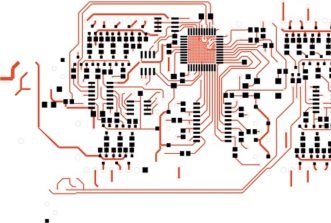This website uses cookies so that we can provide you with the best user experience possible. Cookie information is stored in your browser and performs functions such as recognising you when you return to our website and helping our team to understand which sections of the website you find most interesting and useful.
Discover the Quantum Secrets of Water
For the first time, EPFL researchers have exclusively observed molecules participating in hydrogen bonds in liquid water, measuring electronic and nuclear quantum effects that were previously accessible only via theoretical simulations
Water is synonymous with life, but the dynamic, multifaceted interaction that brings H2O molecules together – the hydrogen bond – remains mysterious. Hydrogen bonds result when hydrogen and oxygen atoms between water molecules interact, sharing electronic charge in the process. This charge-sharing is a key feature of the three-dimensional ‘H-bond’ network that gives liquid water its unique properties, but quantum phenomena at the heart of such networks have thus far been understood only through theoretical simulations.
Now, researchers led by Sylvie Roke, head of the Laboratory for Fundamental BioPhotonics in EPFL’s School of Engineering, have published a new method – correlated vibrational spectroscopy (CVS) – that enables them to measure how water molecules behave when they participate in H-bond networks. Crucially, CVS allows scientists to distinguish between such participating (interacting) molecules, and randomly distributed, non-H-bonded (non-interacting) molecules. By contrast, any other method reports measurements on both molecule types simultaneously, making it impossible to distinguish between them.
“Current spectroscopy methods measure the scattering of laser light caused by the vibrations of all molecules in a system, so you have to guess or assume that what you are seeing is due to the molecular interaction you’re interested in,” Roke explains. “With CVS, the vibrational mode of each different type of molecule has its own vibrational spectrum. And because each spectrum has a unique peak corresponding to water molecules moving back and forth along the H-bonds, we can measure directly their properties, such as how much electronic charge is shared, and how H-bond strength is impacted.”
The method, which the team says has “transformative” potential to characterize interactions in any material, has been published in Science.














